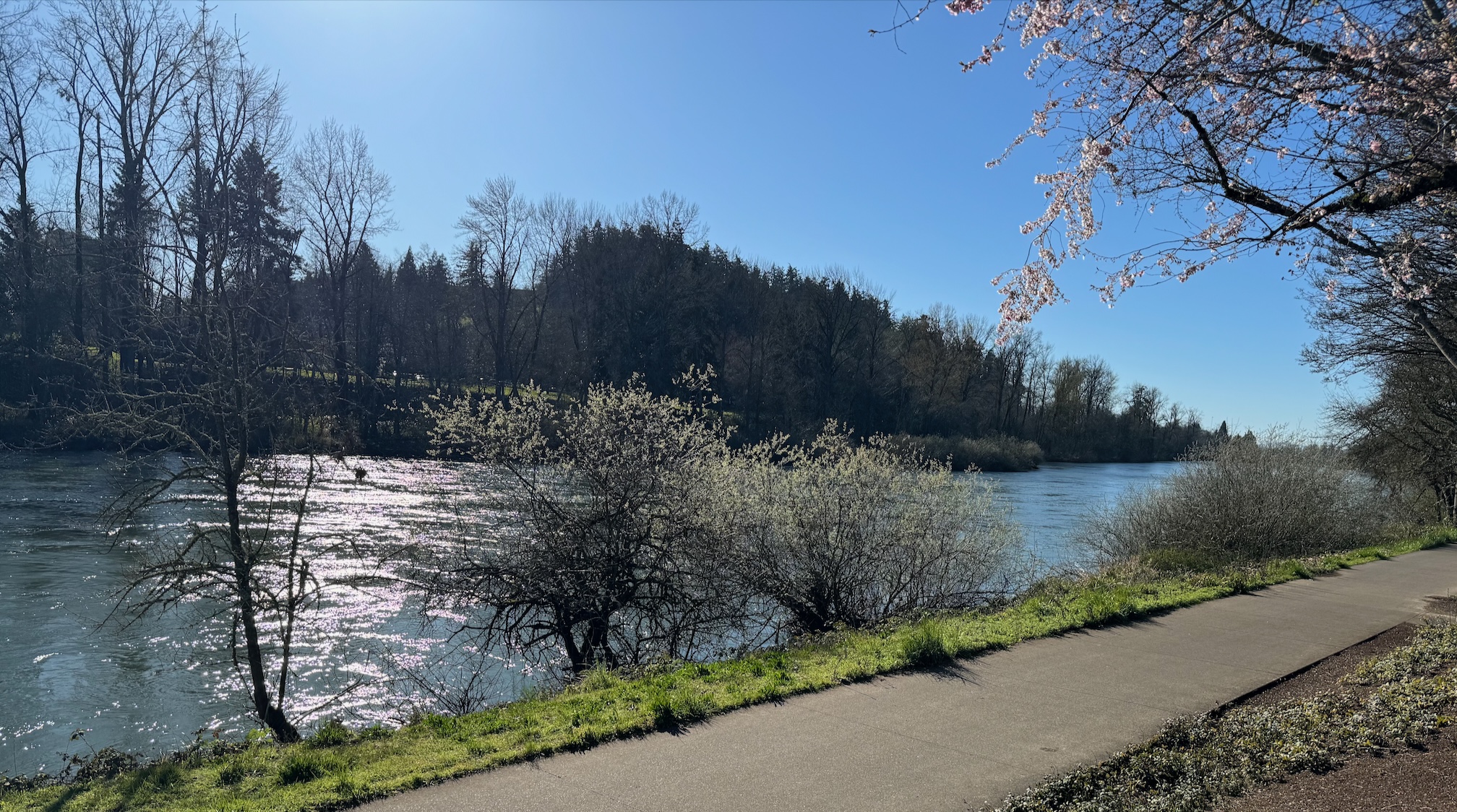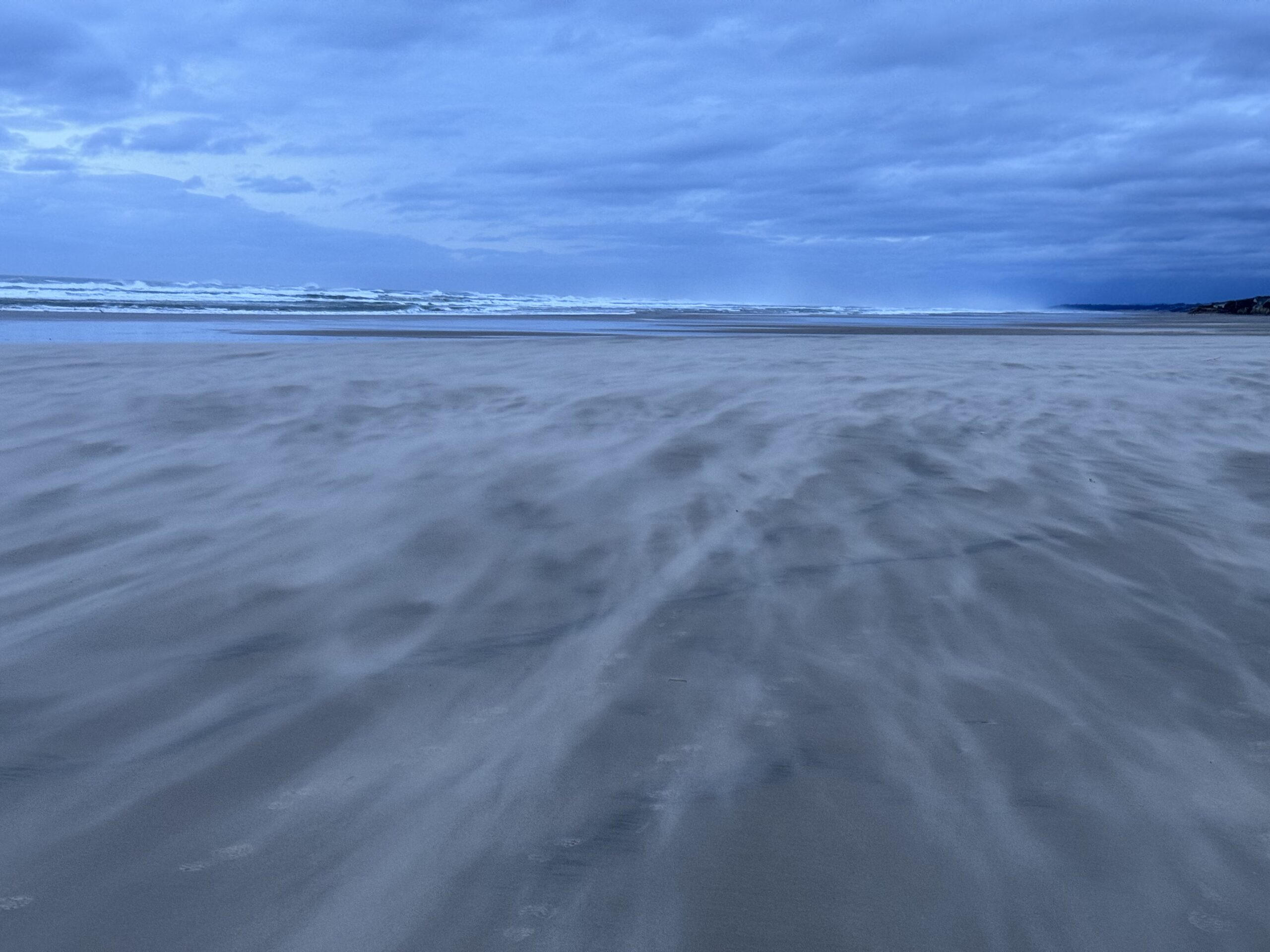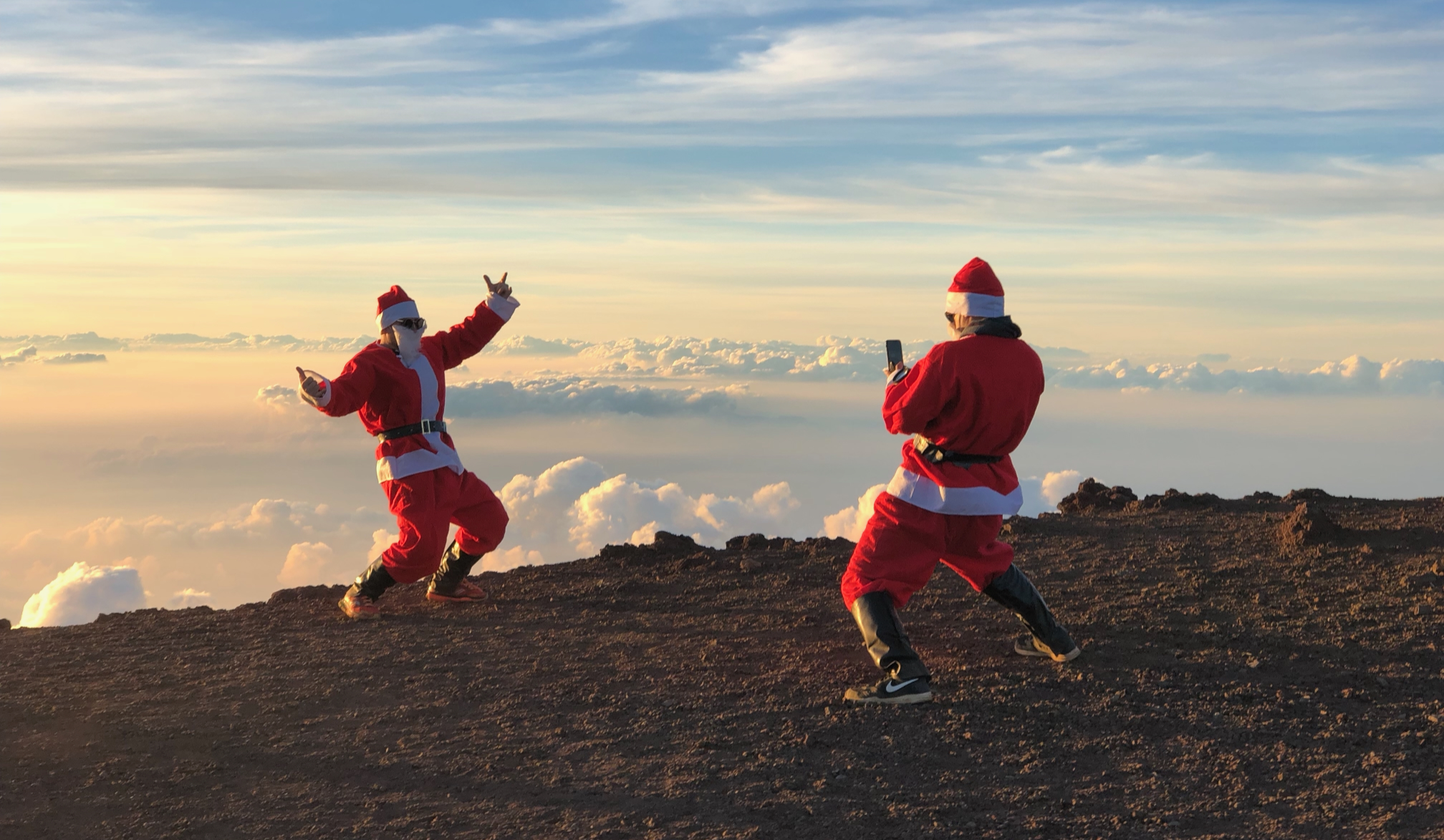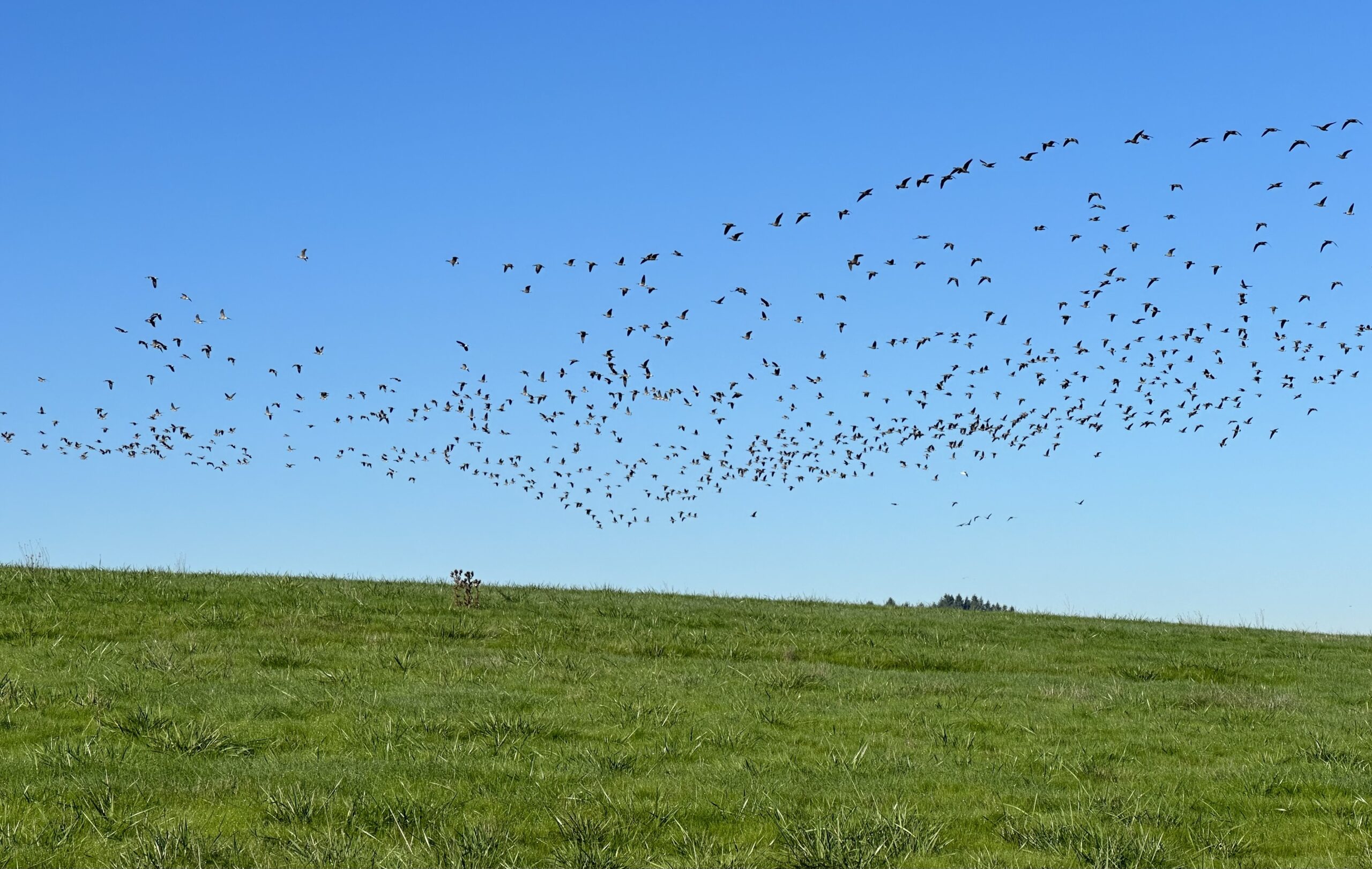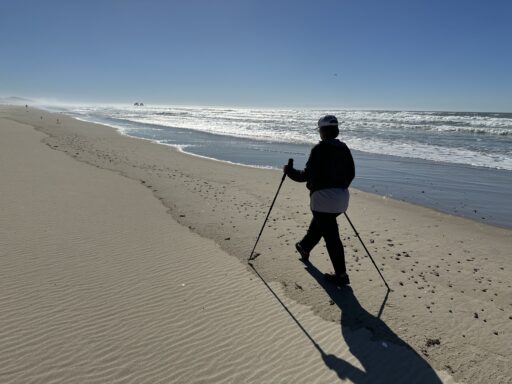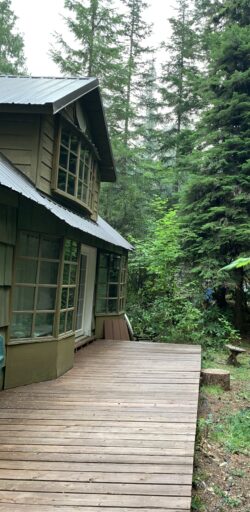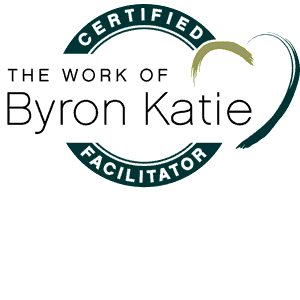Pink Fog of Nostalgia

Welcome, Summer!
The mantra began in my brain last week. Or perhaps it was an obsessive loop. Please come, Summer! It began to morph into a prayer.
Context: Summer Solstice 2025. Once again cool, rainy weather had outstayed its welcome, at least in my mind. While our daily temperature in Oregon held steady in the 50’s and 60’s, a heat dome blanketed most of the rest of the continent.
I had thought about the national heat wave as a concept and then turned it into a guided fantasy so my toes would stay warm. I truly did not know how serious this was at the time, and I honestly do care, but a part of me was jealous. Just a teensy little whiny part.
While I impatiently waited for sunshine to warm the air, I also found my mind replaying the soft sultry summer nights of a “little Dixie” youth. Running barefoot on a perfect lawn. Drinking iced tea all day long while sunbathing by a pool or lake. Any pool or lake. Wearing scanty summer clothes (sans sweatshirts) well into the night. Diving silently into warm, inviting water for a midnight float.
Then other images arose. Stinging Black flies. Waking up at 3 am, shoulders on fire from all the lake time with only iodine and baby oil for protection. Hearing tornado sirens in the middle of the night and crouching in the southwest corner of the basement, holding my breath while listening to the radio for an all-clear. Sweat trickling down my back when exercising any time after 6 am. Chiggers.
Chiggers! I forgot the chiggers! In North America they’re most prevalent in the hot and humid southeast and Midwest. These tiny invisible mites who form a hole in the skin and chew up tiny parts of your inner skin, causing irritation and swelling. The red, pimple-like bumps itch like nothing else and last about a week, at least twice the length of a mosquito bite and far itchier.
Suddenly it occurred to me that I probably never actually ran barefoot over the grass even once because of those chiggers. And that I have long blessed my good fortune in escaping them by moving to my forever home across the country.
I’ve been appreciating the nostalgic moments of life review as ramblings drift in and out of contemplative moments. It’s then that I realize that most everything I think I remember may or may not be absolutely true. Reality. It has a way of dispelling the fog of romanticized recall, somewhat like the DDT “fogger” I think I remember chasing in those sun-warmed safer and simpler years.
I make a note to myself about the pink fog machine of nostalgia. And for just a minute I pause to fill with appreciation for the home I have right now, wet or chilly or domed with heat. Just as it is.
Today. Gratitude. Home Base.
May you live this summer from that solid footing.
SgB.
Blessing Your Heart
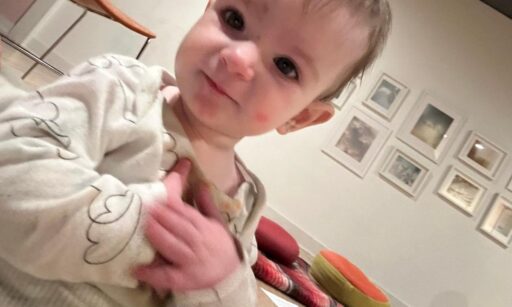
|
Hello, Friend! “Bless Their Hearts” was a phrase I often heard from my elders as I was growing up in the Bible Belt. The expression was often employed to describe benighted folks like the heathens who we sent missionaries to convert. Or perhaps Catholics, who simply didn’t know better. I moved far away, but the phrase migrated with me. As a know-it-all twenty something I peppered it into my conversations, usually in a slightly superior tone. This made it easier to offer my scathing judgements and still appear to be a nice person. For a while this meant anyone who was not in the hip counter-culture created and populated by my generation got their hearts blessed. Gradually humbled by life and my own imperfections, I stopped blessing their hearts too. Sometime during the last three election cycles I’ve noticed my old sarcasm coming to the rescue. A sense of superiority can easily be camouflaged itself as humor, I learned. I’ve blessed the hearts of great swaths of politicians who seem clueless. I called it a coping strategy. Today I’m a bit embarrassed to admit to any of it. Let’s just say it didn’t reflect my higher self. It also doesn’t serve the world when I stay for long in a shell of self-protection and sarcasm. There’s something to be said for that in normal times. Which these are not. What most of my friends and clients most need now is a way to soothe their own nervous systems. This is something I frequently forget to do for myself, despite my best intentions. Over the decades (with the help of therapy) I’ve come to realize how little self-soothing was on the agenda for me when I was a baby. No blankie. No thumb-sucking. No favorite binkie or plush toy for me. This was a point of pride for my parents. Then, last summer, along came grandbaby Juniper, the little spirit who captured my heart. Almost since birth Juniper has been a prize-winning self-soother. When things have been too stimulating or she’s tired, she naturally pats herself softly on her cheek or chest. She often dozes off immediately. As she has grown into herself during her first year, her love pats have become more intentional. It looks like she’s blessing her own heart. With their simplicity and trust, babies have a way of busting ironic adults like me. A while ago I decided Juniper had something there and maybe it wasn’t too late for me. I began to watch her exact movements, imitating them at first in play. One night of insomnia I tried patting my heart, Juniper style. And, presto! I discovered a whole new level of self-blessing. Here’s her technique, in case you could use a little more rest or self-love in this anxious time. Place your right palm over your heart. Feel it beating. Then place left palm over the right hand, patting the hand (and the heart beneath it). Repeat. Add slow, mindful breathing. When was the last time you truly blessed someone’s heart with no trace of irony? When was the last time you blessed your own heart, knowing you deserve it? You can do it now. I’m pretty sure Juniper would say you’re welcome. Let this Spring be a time of Self Blessing. |
|
|
The bud stands for all things, even for those that don’t flower, for everything flowers from within, of self-blessing, though sometimes it is necessary to reteach a thing about its loveliness, to put a hand on the brow of the flower and retell it in words and touch it is lovely until it flowers again from within, of self-blessing. (from St Francis and the Sow by Galway Kinnell) |
|
photos by Liz-e and Ben |
Swans, Time, and Change
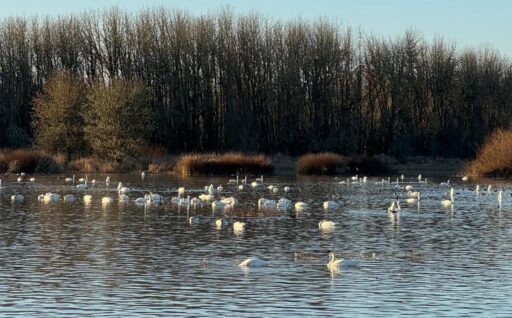
|
Late February, 2025 Hello, Friend! I recently spent the afternoon with more than a thousand tundra swans. They migrate from Alaska to a wildlife sanctuary here in Oregon every year to warm up. This has been true for millennia. Time has not significantly changed this rite. It has always been simply the natural order of things. There’s something deeply soothing about watching nature’s immutable patterns, given all the random changes and confusions in our human world. And then there are the gorgeous swans themselves, in all their storied grace. The eternal kind of beauty offered by the natural world is a balm. Changes in the world of humans can break your heart. But Nature’s beauty still has the power to knock you out. And wake you up. My desire to protect the natural order is strengthened when I focus on this. I feel a deep responsibility to stand for those that can’t protect themselves, like the swans. When I remember thi I’m not willing to give myself over to the turmoil of the day. Instead I’m deeply motivated to put down some speed bumps to slow down a bit of the craziness. On my way home from the refuge, I decide to do something to break through the shocked reaction that has kept me frozen this past month. As a life coach, I know to focus on achievable goals and take a steady approach. So I make an action plan to do something every day. I decide twenty minutes is enough time to write a post card or make three phone calls. Who do I call? To begin with, my representatives in the Capitol. Who to write? I sign up again with Vote Forward to send letters to reluctant voters. And what about donations? I turn to my list of environmental and humanitarian organizations. I’m still working on answers, and they seem to come one at a time. The last question, Where and when will I spend my money? is answered simply on Friday Feb. 28th. I can support an Economic Blackout for the day by buying nothing online or in person. If enough of us participate it can send a message to corporations and government that the needs of everyday working people are important. More about that here. What about you? What answers are arising for you? Sometimes the smallest actions have big consequences, especially when taken together. As for me, every time I send a letter or make a call I’ll be thinking of those swans. And there’s comfort in knowing I’m doing my own small part to protect nature’s timeless and immutable way of reminding us what really matters. Keeping the faith, |
|
Becoming
Sudden
an explosion of swans,
cracks the sky, each day
a thousand strong and louder
a white regatta of pillows
drifting down, honking
and whistling their location.
A lamentation of swans
crying from grief and exhaustion
landing for the day
an arabesque of swans in glissando,
sweeping the surface and settling
to feed at dusk.
Heads down. Tails up
And then shifting again
Into a sail of swans
Slipping smoothly into shadows
and silhouettes, seeking other
swan kin before tucking heads.
Changing for the long dark night
into at tranquility of swans.
—SgB 2025
The Grace of Everyday Epiphanies
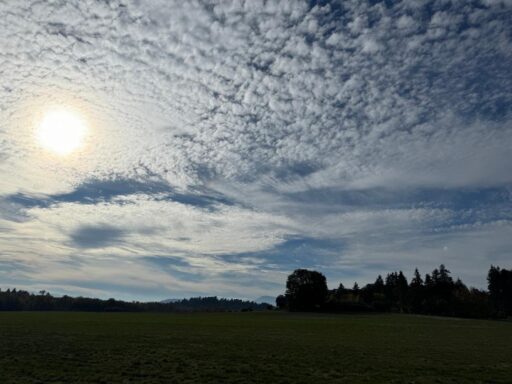
On January 6 many years ago, I stumbled on a holiday that looked like it had it all: Epiphany. Only one word at the bottom of a plastic billboard outside a church. Not a part of the early training in my Southern Baptist youth, it had all the exotic mystery of whatever Catholics did.
As I grew into the English major I was in college, I discovered the meaning of the word epiphany, which came from the Greek and meant “to reveal.” In the thirteenth century this referred to the revealing of Jesus’ presence in the world.
But my time in history and culture is more mid-century modern. I had felt Jesus “knockin on my heart” at summer camp, sure. But in my teen angst (and associated depression), I rejected childish beliefs. But I had also lost the magic of insight that had seemed to burst out of nowhere. In those moments, it felt to me like some ancient inner sage pierced through the fog and revealed the vast possibilities on the other side of the ordinary world.
On the day that the word epiphany beckoned from the billboard, I was a mother of two young children. I taught literature in public schools. I had written papers on epiphanies in literature and I brought that interest to my teaching.
The idea of declaring time to consciously invite epiphanies into my life tickled me, inside out. I figured that an early bedtime was just what my children, ages three and six, needed for their health, but I needed that time for me, too. I spent a couple of quiet hours on that evening with candles lit, reading wisdom texts, meditating, and imagining a future.
Over the years I came to think of this day as my own personal holiday. I treasure these early memories. I’ve revisited them in my blog Reclaiming Epiphany.
This year will be the 40th year I celebrate epiphany, which I now understand has always had its own following besides me. As a church holy day, Epiphany (with a capital E) is also known as Three Kings Day. In Latin America the day is commemorating the Three Wise Men’s arrival at the humble stable. It’s also the day that Hispanic children to awaken to find the gifts the Three Kings have left them.
Irish women seized on the January 6th date and renamed it Women’s Christmas, a time when all the fuss is over and the women and mothers who (mostly) put on the event can finally rest and have their own celebration. That’s my kind of epiphany right there: Celebrating that the festive season has passed and things are finally settling down enough to focus on our own lives or share in the sisterhood of other women.
Some female Christian leaders have carried the message and the invitation for introspection to women in their community. If this catches your soul’s fancy, here’s a link to one such program:https://sanctuaryofwomen.com/WomensChristmasRetreat2025.pdf
What might you do this year to celebrate Women’s Christmas or Epiphany? With the holiday hoopla and travel mostly behind you, what can you do to claim some time for your heart to rest? How can you slow down enough to hear an inner voice suggest how you might care for your spiritual Self?
For many of us, the power of rest itself is the epiphany. If that’s true for you, why not kindly grant it to your tired self? You don’t need a grand plan. You might need to at least find time to declare a long-needed beauty sleep so that you can begin to catch up and go forth with a bit of vigor. Or maybe vigor itself if a good place to start and a walk right now is the ticket. Nature, of course, is almost always the ticket.
Go a bit further. If you were your own kindest fairy godmother, what would you grant yourself? Why not give yourself a bit of that this year, even if it’s a tiny part of your true wish? Consider it a down payment from the part of you who willingly gives to loved ones more than you think you can.
I now have more time and means to make good on my promise to my younger self. As my favorite poet William Stafford said, Armageddon is possible. But so is love. And salvation. And so this year I wake up and marvel at all the bonuses of this life.
One of those is you. May your inner fairy godmother grant you your fondest wish in the form of an Aha! Moment or two in nature or on the city street. Or perhaps a meaningful connection with a spiritual guide or teacher from your tradition or training. Or as a pop-up epiphany in meditation or prayer. Even an extra hour of sleep can be holy. Just as holy as is the ability to truly witness any of life’s bonus surprises.
From the darkness of Winter, I wish you the grace of many epiphanies in your ordinary life.
SgB





